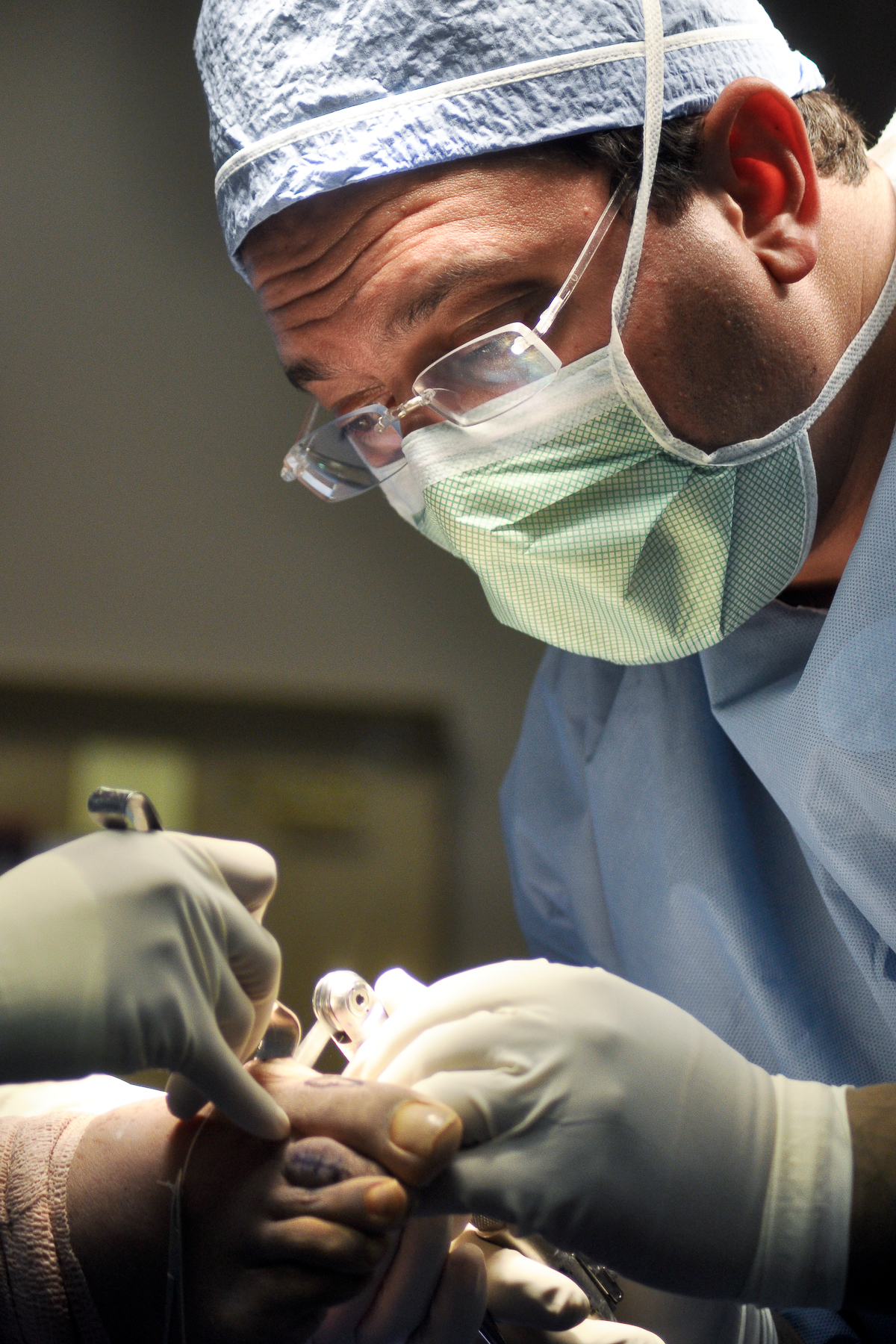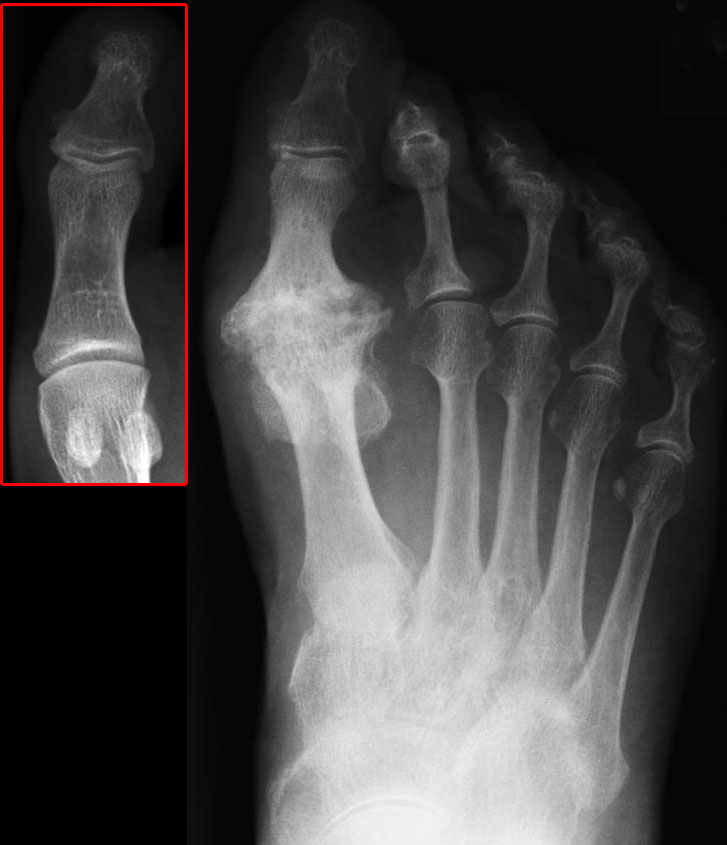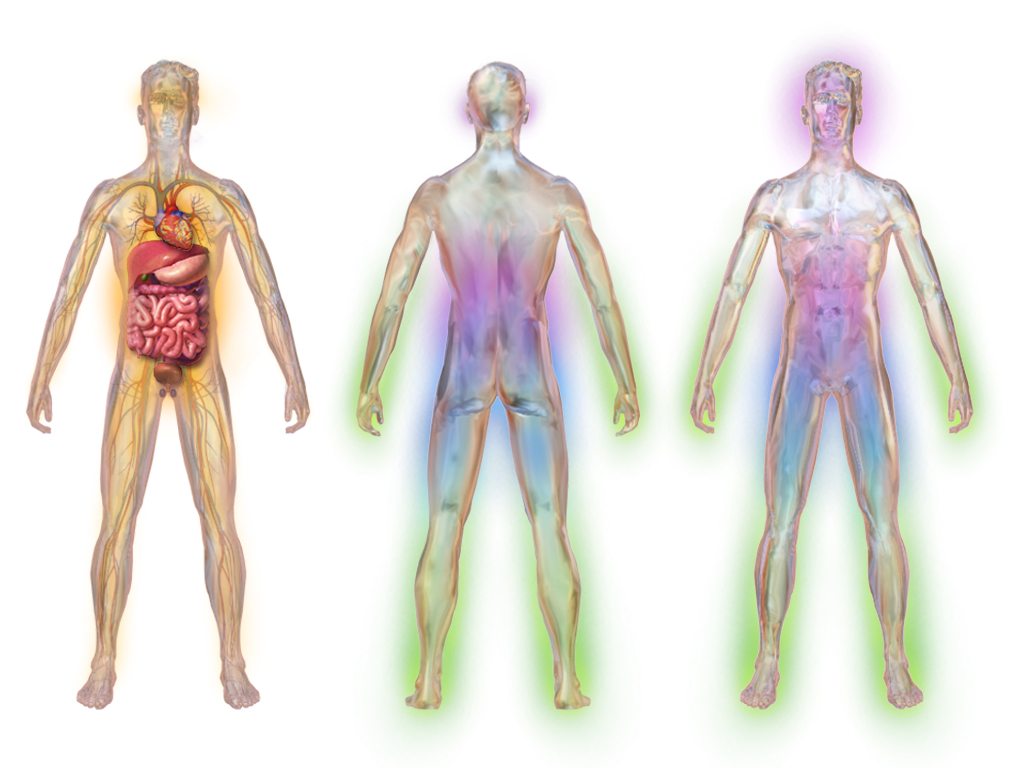|
Forefoot
The forefoot is the anterior aspect of the foot, composed of the five metatarsal bones, the fourteen phalanges and associated soft tissue structures. It is a common site of pathology in podiatry, and is the anatomic region involved in such conditions as hallux valgus, hallux rigidus, and Morton's neuroma, among others. In cases of severe deformity, such as in Charcot joints seen with diabetic neuropathy, the forefoot can be reconstructed by arthroplasty. References [...More Info...] [...Related Items...] OR: [Wikipedia] [Google] [Baidu] |
Morton's Neuroma
Morton's neuroma is a benign neuroma of an intermetatarsal plantar nerve, most commonly of the second and third intermetatarsal spaces (between the second/third and third/fourth metatarsal heads; the first is of the big toe), which results in the entrapment of the affected nerve. The main symptoms are pain and/or numbness, sometimes relieved by ceasing to wear footwear with tight toe boxes and high heels (which have been linked to the condition). The condition is named after Thomas George Morton, though it was first correctly described by a chiropodist named Durlacher. Some sources claim that entrapment of the plantar nerve resulting from compression between the metatarsal heads, as originally proposed by Morton, is highly unlikely, because the plantar nerve is on the plantar side of the transverse metatarsal ligament and thus does not come into contact with the metatarsal heads. It is more likely that the transverse metatarsal ligament is the cause of the entrapment. Though ... [...More Info...] [...Related Items...] OR: [Wikipedia] [Google] [Baidu] |
Podiatry
Podiatry () or podiatric medicine () is a branch of medicine devoted to the study, diagnosis, medical and surgical treatment of disorders of the foot, ankle, and leg. A Doctor of Podiatric Medicine (DPM), or a podiatrist, is a healthcare professional who diagnoses and treats conditions affecting the structures of the foot, ankle, and leg. The US podiatric medical school curriculum includes lower extremity anatomy, general human anatomy, physiology, general medicine, physical assessment, biochemistry, neurobiology, pathophysiology, genetics and embryology, microbiology, histology, pharmacology, women's health, physical rehabilitation, sports medicine, research, ethics and jurisprudence, biomechanics, general principles of orthopedic surgery, and foot and ankle surgery. Podiatry is a high-paying specialization and was listed by ''Forbes'' in 2007 as the 15th-best-paid profession in the United States. The median annual salary of a podiatrist in the US was $124,830 in 2016 a ... [...More Info...] [...Related Items...] OR: [Wikipedia] [Google] [Baidu] |
Hallux Valgus
A bunion, also known as hallux valgus, is a deformity of the joint connecting the big toe to the foot. The big toe often bends towards the other toes and the joint becomes red and painful. The onset of bunions is typically gradual. Complications may include bursitis or arthritis. The exact cause is unclear. Proposed factors include wearing overly tight shoes, high-heeled shoes, family history, and rheumatoid arthritis. Diagnosis is generally based on symptoms and supported by X-rays. A similar condition of the little toe is referred to as a bunionette. Treatment may include proper shoes, orthotics, or NSAIDs. If this is not effective for improving symptoms, surgery may be performed. It affects about 23% of adults. Females are affected more often than males. Usual age of onset is between 20 and 50 years old. The condition also becomes more common with age. It was first clearly described in 1870. Archaeologists have found a high incidence of bunions in skeletons from 14th- ... [...More Info...] [...Related Items...] OR: [Wikipedia] [Google] [Baidu] |
Charcot Joints
Neuropathic arthropathy (or neuropathic osteoarthropathy), also known as Charcot joint (often Charcot foot) after the first to describe it, Jean-Martin Charcot, refers to progressive degeneration of a weight-bearing joint, a process marked by bony destruction, bone resorption, and eventual deformity due to loss of sensation. Onset is usually insidious. If this pathological process continues unchecked, it can result in joint deformity, ulceration and/or superinfection, loss of function, and in the worst-case scenario, amputation or death. Early identification of joint changes is the best way to limit morbidity. Symptoms and signs The clinical presentation varies depending on the stage of the disease from mild swelling to severe swelling and moderate deformity. Inflammation, erythema, pain and increased skin temperature (3–7 degrees Celsius) around the joint may be noticeable on examination. X-rays may reveal bone resorption and degenerative changes in the joint. These finding ... [...More Info...] [...Related Items...] OR: [Wikipedia] [Google] [Baidu] |
Anterior
Standard anatomical terms of location are used to unambiguously describe the anatomy of animals, including humans. The terms, typically derived from Latin or Greek roots, describe something in its standard anatomical position. This position provides a definition of what is at the front ("anterior"), behind ("posterior") and so on. As part of defining and describing terms, the body is described through the use of anatomical planes and anatomical axes. The meaning of terms that are used can change depending on whether an organism is bipedal or quadrupedal. Additionally, for some animals such as invertebrates, some terms may not have any meaning at all; for example, an animal that is radially symmetrical will have no anterior surface, but can still have a description that a part is close to the middle ("proximal") or further from the middle ("distal"). International organisations have determined vocabularies that are often used as standard vocabularies for subdisciplines of anatomy ... [...More Info...] [...Related Items...] OR: [Wikipedia] [Google] [Baidu] |
Metatarsal
The metatarsal bones, or metatarsus, are a group of five long bones in the foot, located between the tarsal bones of the hind- and mid-foot and the phalanges of the toes. Lacking individual names, the metatarsal bones are numbered from the medial side (the side of the great toe): the first, second, third, fourth, and fifth metatarsal (often depicted with Roman numerals). The metatarsals are analogous to the metacarpal bones of the hand. The lengths of the metatarsal bones in humans are, in descending order, second, third, fourth, fifth, and first. Structure The five metatarsals are dorsal convex long bones consisting of a shaft or body, a base (proximally), and a head ( distally).Platzer 2004, p. 220 The body is prismoid in form, tapers gradually from the tarsal to the phalangeal extremity, and is curved longitudinally, so as to be concave below, slightly convex above. The base or posterior extremity is wedge-shaped, articulating proximally with the tarsal bones, an ... [...More Info...] [...Related Items...] OR: [Wikipedia] [Google] [Baidu] |
Phalanges
The phalanges (singular: ''phalanx'' ) are digital bones in the hands and feet of most vertebrates. In primates, the thumbs and big toes have two phalanges while the other digits have three phalanges. The phalanges are classed as long bones. Structure The phalanges are the bones that make up the fingers of the hand and the toes of the foot. There are 56 phalanges in the human body, with fourteen on each hand and foot. Three phalanges are present on each finger and toe, with the exception of the thumb and large toe, which possess only two. The middle and far phalanges of the fifth toes are often fused together (symphalangism). The phalanges of the hand are commonly known as the finger bones. The phalanges of the foot differ from the hand in that they are often shorter and more compressed, especially in the proximal phalanges, those closest to the torso. A phalanx is named according to whether it is proximal, middle, or distal and its associated finger or toe. The proxi ... [...More Info...] [...Related Items...] OR: [Wikipedia] [Google] [Baidu] |
Hallux Rigidus
Hallux rigidus or stiff big toe is degenerative arthritis and stiffness due to bone spurs that affects the metatarsophalangeal joints (MTP) at the base of the hallux (big toe). Hallux flexus was initially described by Davies-Colley in 1887 as a plantar flexed posture of phalanx relative to the metatarsal head. About the same time, Cotterill first used the term ''hallux rigidus''. Signs and symptoms * Pain and stiffness in the joint at the base of the big toe during use (walking, standing, bending, etc.) * Difficulty with certain activities (running, squatting) * Swelling and inflammation around the joint Although the condition is degenerative, it can occur in patients who are relatively young, particularly active sports people who have at some time suffered trauma to the joint (turf toe). A notable example is NBA star Shaquille O'Neal who returned to basketball after surgery. Causes This condition, which occurs in adolescents and adults, can be associated with previous tr ... [...More Info...] [...Related Items...] OR: [Wikipedia] [Google] [Baidu] |
Diabetic Neuropathy
Diabetic neuropathy is various types of nerve damage associated with diabetes mellitus. Symptoms depend on the site of nerve damage and can include motor changes such as weakness; sensory symptoms such as numbness, tingling, or pain; or autonomic changes such as urinary symptoms. These changes are thought to result from microvascular injury involving small blood vessels that supply nerves ( vasa nervorum). Relatively common conditions which may be associated with diabetic neuropathy include distal symmetric polyneuropathy; third, fourth, or sixth cranial nerve palsy; mononeuropathy; mononeuropathy multiplex; diabetic amyotrophy; and autonomic neuropathy. Signs and symptoms Diabetic neuropathy can affect any peripheral nerves including sensory neurons, motor neurons, and the autonomic nervous system. Therefore, diabetic neuropathy has the potential to affect essentially any organ system and can cause a range of symptoms. There are several distinct syndromes based on the orga ... [...More Info...] [...Related Items...] OR: [Wikipedia] [Google] [Baidu] |
Arthroplasty
Arthroplasty (literally " e-orming of joint") is an orthopedic surgical procedure where the articular surface of a musculoskeletal joint is replaced, remodeled, or realigned by osteotomy or some other procedure. It is an elective procedure that is done to relieve pain and restore function to the joint after damage by arthritis or some other type of trauma. Types For the last 45 years, the most successful and common form of arthroplasty is the surgical replacement of arthritic or destructive or necrotic joint or joint surface with a prosthesis. For example, a hip joint that is affected by osteoarthritis may be replaced entirely ( total hip arthroplasty) with a prosthetic hip. This would involve replacing both the acetabulum (hip socket) and the head and neck of the femur. The purpose of this procedure is to relieve pain, to restore range of motion and to improve walking ability, thus leading to the improvement of muscle strength. Other types of arthroplasty * Interposi ... [...More Info...] [...Related Items...] OR: [Wikipedia] [Google] [Baidu] |

.png)



